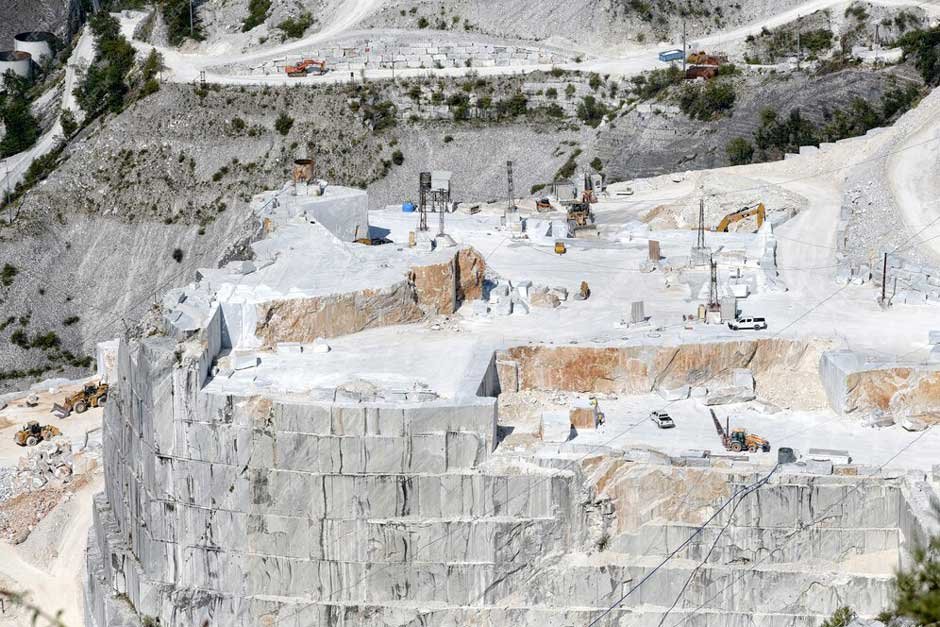The journey of natural stone from deep within the earth to the polished surfaces we admire in homes, buildings, and landscapes is nothing short of remarkable. Quarried from ancient geological deposits, stones like marble, granite, and limestone have shaped human history, inspiring architects, artisans, and designers. Today, modern technologies and sustainable practices ensure that the natural stone industry continues to thrive while respecting the environment. Let’s delve into the fascinating journey of natural stone, from its origins in a quarry to its final, functional form.
Discovering the Source: What Are Natural Stone Quarries?
Natural stone quarry is the birthplaces of the materials that define timeless architecture and design. These quarries are carefully chosen for their abundance of high-quality stone. Over millions of years, geological processes have created deposits of varying colors, textures, and densities. Stones like granite are formed through volcanic activity, while limestone originates from compacted marine sediments. Each quarry represents a unique snapshot of Earth’s history, offering stones with unmatched beauty and individuality.
Unveiling the Quarrying Process
Extracting stone from the earth is a meticulous process that balances technology with craftsmanship. Here’s a closer look at how it unfolds:
1. Surveying and Planning
Before extraction begins, geologists assess the site to identify viable deposits. Detailed surveys ensure minimal environmental disruption while maximizing resource utilization.
2. Cutting and Blasting
Once identified, large sections of stone are separated from the quarry face using controlled cutting and blasting techniques. Modern tools like diamond wire saws and drills allow for precision and efficiency, reducing waste and preserving the stone’s integrity.
3. Block Extraction
Massive blocks of stone are carefully extracted and transported to processing facilities. Each block, weighing several tons, represents the raw potential waiting to be transformed.
The Transformation: Processing and Finishing
At the processing facility, raw stone blocks undergo various stages of refinement:
- Sawing: Blocks are sliced into slabs or tiles of varying thicknesses, depending on their intended use.
- Polishing: High-speed polishing machines enhance the natural luster of the stone, revealing its unique patterns and colors.
- Shaping: Precision tools shape the slabs into finished products like countertops, tiles, or architectural elements.
- Quality Control: Each piece is inspected for consistency, durability, and aesthetic appeal before being shipped to its final destination.
Applications: Where Natural Stone Shines
Natural stone is prized for its versatility and beauty, making it a preferred material across various applications:
- Residential Interiors: Marble countertops, granite flooring, and slate backsplashes bring sophistication and durability to homes.
- Commercial Spaces: Natural stone adds an air of prestige to lobbies, facades, and conference rooms.
- Landscaping: Granite steps, limestone pathways, and retaining walls integrate seamlessly with outdoor environments.
- Monuments and Art: From ancient sculptures to modern installations, natural stone remains a canvas for creativity.
Embracing Sustainability
The natural stone industry has made significant strides toward sustainability. Quarries now employ practices that minimize waste, such as repurposing stone byproducts for construction or landscaping. Many sites also prioritize land reclamation, restoring the quarry area to its natural state once extraction is complete. The inherent durability of natural stone further supports sustainability, as it reduces the need for frequent replacements compared to synthetic materials.
The Legacy of Craftsmanship
The journey of natural stone is a testament to the artistry of those who work with it. From quarry workers to stone masons, every hand involved contributes to turning raw stone into a masterpiece. Their expertise ensures that the stone’s natural beauty is preserved while adapting it to meet the demands of modern design. The result is a material that transcends time, merging tradition with innovation.
A Material That Stands the Test of Time
Natural stone is more than just a building material—it’s a bridge between the past and the future. Its journey from quarry to project embodies resilience, elegance, and sustainability. Whether it graces the floor of a home or forms the facade of a skyscraper, natural stone remains a symbol of enduring craftsmanship and timeless beauty. By choosing natural stone, you’re not only investing in quality but also embracing a piece of Earth’s history, shaped by both nature and human ingenuity.





